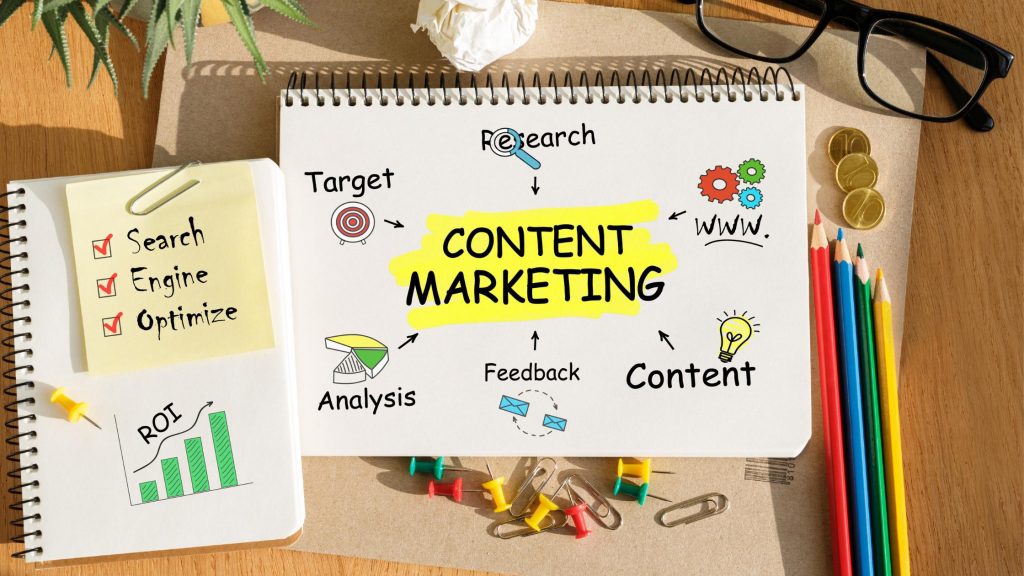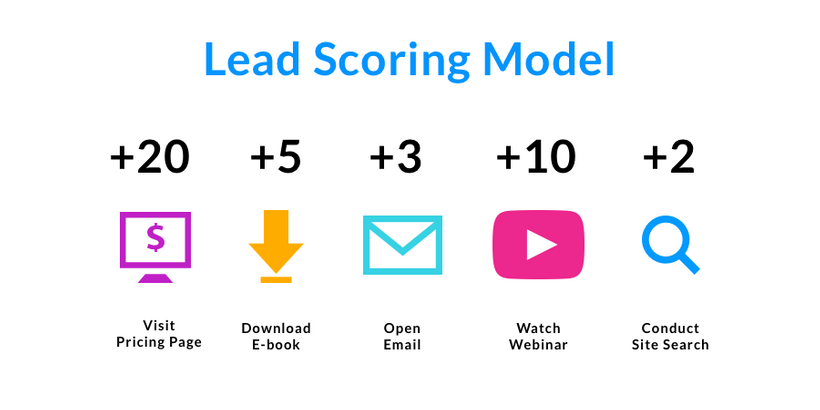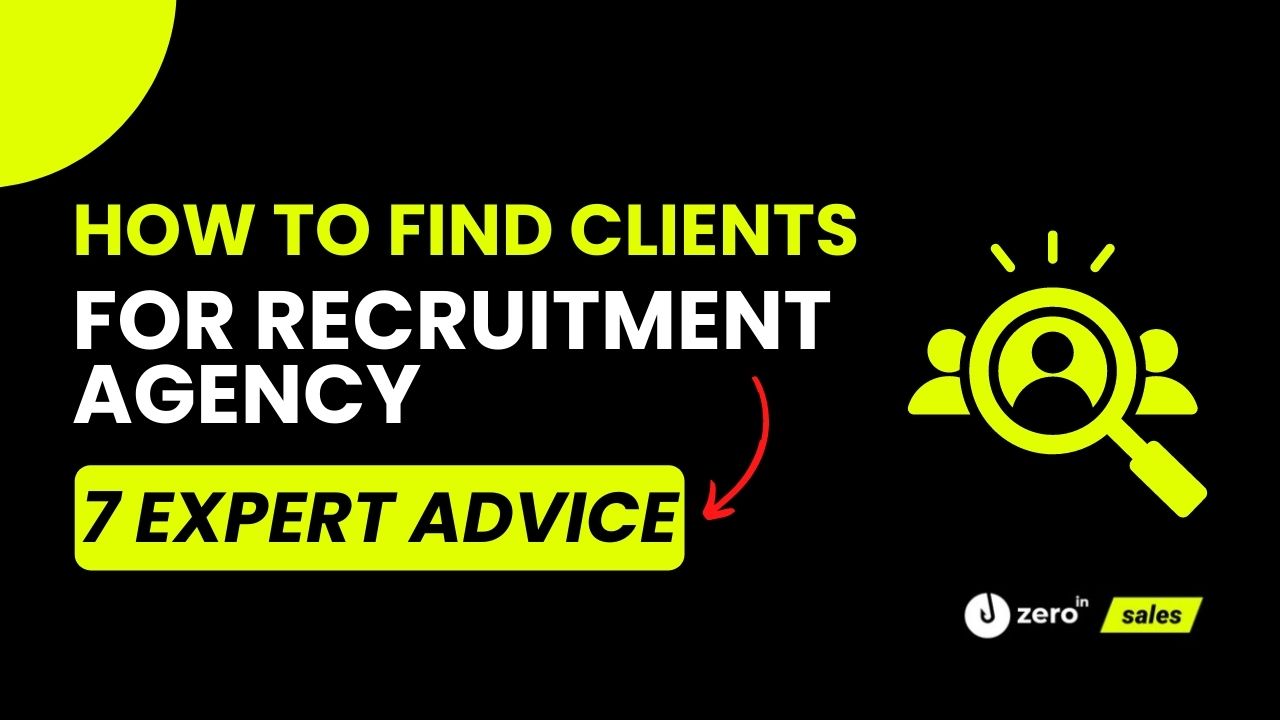As your cursor hovers over this article, we can almost hear your internal monologue:
“Not another guide on how to clients for recruitment agency.”
We understand the sentiment, and that’s precisely why this piece is different.
This isn’t just some patchwork assemblage of general BS tips and tricks.
It’s the ultimate guide – a comprehensive, meticulously curated roadmap that has been designed with one single goal – supercharging your client acquisition process in 2024.
This guide, filled with seven expert pieces of advice, is the result of exhaustive research, relentless strategic brainstorming, and countless hours of real-world experimentation.
So, prepare your favorite beverage, and let’s get into it.
Summary
In the following sections, we will break down the process of finding clients for your recruitment agency.
In this article, we’ll guide you through the strategies and techniques that have proven successful in 2024’s dynamic business environment.
You’ll discover new ways to reach your target audience, enhance your agency’s visibility, build strong relationships, and, most importantly, secure high-value clients.
Let’s get started!
What type of Clients need Recruitment Services?

Every recruitment agency is different, and so are the businesses that could benefit from your services. So, who exactly needs what you have to offer?
The answer may surprise you: almost everyone.
Whether it’s a new startup striving to build their dream team, an established corporation seeking specialized talents, or a rapidly scaling organization requiring assistance with their expanding personnel needs – every business stands to gain from recruitment agency.
But, we’re getting ahead of ourselves.
Let’s take a moment to understand the different types of clients that might need your recruiting help in 2024.
Firstly, Small and Medium-sized Enterprises (SMEs) are often eager to secure the right talent to drive their growth.
As they usually lack the in-house resources (recruiters) to manage intensive recruitment drives, your agency’s services can be a lifesaver.
Secondly, larger corporations, though they may have an HR department and recruiter, often need recruitment agencies for specialized roles.
High-quality candidates for niche positions are hard to come by and that’s where your deep knowledge, experience, and extensive network can be very beneficial.
Lastly, there are the high-growth companies.
These enterprises are constantly on the hunt for new talent to meet their rapid expansion plans.
Your recruiter’s ability to source, screen, and secure talent quickly and efficiently could be just what they need to sustain their growth.
So, now that you know who might need your services, let’s delve deeper into how to grab their attention and bring them on board.
Preparation Phase – Lay Down the Groundwork
Now that we’ve identified who might need your assistance, it’s time to roll up your sleeves and get your hands dirty.
As with any endeavor worth undertaking, successful customer acquisition doesn’t happen by chance.
It’s a product of careful planning and preparation.
This phase is where you lay down the groundwork – it’s about setting a firm foundation that will steer your customer acquisition efforts in the right direction.
So, strap in, and let’s get to work.
From defining your Ideal Customer Profile to crafting a unique value proposition, polishing your recruiter portfolio, and beyond, there’s much to do.
The road ahead might seem bumpy, but remember, the groundwork you lay now will pay dividends when you enter the fray of customer acquisition.
1. Start with ICP

Before you set off on your quest to acquire clients, it’s vital to understand who you’re looking for.
This is where creating your Ideal Customer Profile (ICP) comes into play.
The ICP is a detailed description of the customer that is the best fit for your services.
This isn’t just about company size or industry.
It’s about identifying the businesses that will benefit the most from what you offer and, equally importantly, those that will benefit your business the most.
Consider aspects such as the company’s location, size, industry, culture, and typical roles they hire for.
- Are they local businesses or multinational conglomerates?
- Do they hire frequently, or do they have occasional recruitment needs?
- Are they in the tech industry, finance, healthcare, or another sector?
- Do they have in-house recruiters/recruiter who take care of candidates?
- Is their business in a growth phase when they need a lot of hires quickly?
Answering these questions will help you create a clear and precise ICP.
Remember, the goal here isn’t to limit your prospective client base but to focus your efforts where they’re likely to be most fruitful.
With a clear ICP, your marketing messages will be more targeted, your value proposition more compelling, and your client acquisition strategies more effective.
After all, the first step in finding your perfect clients is knowing what they look like.
2. Establish Unique Value Proposition
With a clear picture of your ideal client, it’s time to turn the lens on your recruitment agency.
Ask yourself, “What makes my agency unique? What sets us apart from other agencies?”
The answer to these questions forms your Unique Value Proposition (UVP).
Your UVP is the magic key that opens the door to prospective customers.
It’s a concise statement that conveys how your agency solves your clients’ problems, deliver specific benefits, and tells why you’re better than the competition.
Perhaps you specialize in a certain industry, providing deep recruiting expertise and a broad network.
Or maybe you have a cutting-edge candidate vetting process that ensures your clients only see the top 1% of talent.
Your UVP could also be tied to your exceptional customer service or the comprehensive support you provide to them.
Crafting your UVP requires a deep understanding of your services, your clients’ pain points, and the competitive recruiting landscape.
And once you get it right, your UVP will become a powerful tool that not only attracts prospective customers but also fosters a strong connection with them.
Remember, your UVP is the cornerstone of your brand identity and what sets you apart from other recruiters and recruiting businesses out here.
It’s the first thing prospective customers should know about you, and it should resonate throughout your marketing and sales efforts.
So, take the time to get it right.
3. Improve Your Portfolio

In the world of recruiters, credibility is everything.
Your prospective customers want evidence that you can deliver on your promises – and that’s where your portfolio comes in.
Think of your portfolio as a showcase of your organization’s recruiting victories.
It’s your chance to shine a spotlight on the successful placements you’ve made, the companies you’ve transformed with your talent sourcing, and the glowing testimonials of satisfied clients.
But a good portfolio goes beyond simply listing your recruiting achievements or boasting about certain candidates you found.
It tells a story.
It highlights the challenges faced, the strategies employed, and the successful outcomes aka finding quality candidates and helping them make the right choice.
It reveals your journey and illuminates the values, insights, and expertise that have guided your recruiting success.
Ensure your portfolio is easily accessible – be it on your website, your social media profiles, or a neatly organized document.
And don’t forget to keep it updated.
Each successful recruiting placement, each happy client, adds another chapter to your story of success.
In essence, a polished, well-curated portfolio is a powerful testament to your agency’s capabilities.
It provides tangible evidence of your expertise and sets you apart from the competition.
4. Build a Website
Your website is more than just a digital footprint – it’s your recruitment firm’s online headquarters.
It’s where prospective customers go to learn about your recruiting offers, check your credibility, and ultimately, decide whether they want to do business with you.
Starting with a clean, professional design, your website should reflect your brand and resonate with your unique value proposition.
Ensure it’s easy to navigate, with clearly defined sections for:
- services,
- about us,
- portfolio,
- testimonials,
- and contact information.
The website content should be engaging, informative, and imbued with your agency’s personality.
It should answer the visitors’ key questions *the main one being should I choose you or should I go with other recruiters*, showcase your expertise, and convince them that you’re the right choice for their recruitment needs.
But a stunning website isn’t enough.
It also needs to be optimized for search engines.
This includes having a responsive design for mobile users, fast loading speeds, and using strategic keywords that prospective customers might use when searching for recruiting assistance.
Remember, if your website can’t be found on search engines, you’re missing out on prospective customers and letting other recruiters take them.
A well-structured, aesthetically pleasing, and SEO-optimized website is your most powerful marketing tool.
5. Set up Social Media Profiles

In this digital age, establishing a robust social media presence is no longer optional – it’s a necessity.
Social media platforms (LinkedIn, Twitter, Facebook) are digital hubs where your ICPs spend a significant amount of their time.
Therefore, they offer unparalleled opportunities to:
- increase your visibility,
- engage with prospective customers,
- and strengthen your brand.
Begin by identifying the platforms most relevant to your target clients.
LinkedIn is a no-brainer for recruitment agencies as its basically a candidate pool, but don’t overlook the potential of Twitter, Facebook, or Instagram.
Each platform offers unique opportunities to connect with prospective customers and showcase your company’s culture and success.
Once your accounts are set up, it’s time to create content.
Share success stories, post thought-provoking articles, offer valuable advice, and start conversations.
Your goal is to provide value, foster engagement, and position your organization as an authoritative voice in the recruitment space.
In addition, use social media to network.
Follow industry leaders, connect with fellow recruiters, join relevant groups, comment on posts, and participate in discussions.
Building relationships on social media can lead to referrals, partnerships, and new customer opportunities.
By setting up and maintaining an active, engaging social media presence, you’re not just building your brand – you’re creating opportunities for customers to discover you, interact with you, and ultimately, choose you for their recruitment needs.
6. Use Light Customer Relationship Management (CRM)
The path to customer acquisition isn’t always a straight line.
It’s more of a winding road filled with valuable touchpoints, and to navigate this journey successfully, you need a good map.
This is where you need Customer Relationship Management (CRM) software.
Starting with a light CRM can make a huge difference in your customer acquisition process.
It’s like having a personal assistant who tracks every interaction, organizes information, and ensures you never miss an opportunity to connect and engage with prospective customers.
A good CRM software will help you manage your sales pipeline, track leads, follow up effectively, and maintain healthy relationships.
It provides a central place to store all your client-related information – making it easy to keep track of who you’ve contacted, what was discussed, and when to follow up.
Moreover, most CRM offer integration with email, social media, and other communication platforms.
This means you can manage all your customer interactions from a single, streamlined interface.
Embracing CRM software early on allows you to stay organized, maintain constant communication, and ensure no lead falls through the cracks.
So, gear up and let CRM guide your way to a flourishing customer base.
If you are looking for a free light CRM tool, make sure to check out ZeroIn. Although originally all-in-one email discovery solution, it has a complete CRM for effortless organization and management of valuable prospect data.
7. Create Pricing Policies and Packages
While your passion for recruitment and the quality of your service are paramount, let’s not forget the role of practicality in your recruiting agency’s success.
A well-defined pricing policy and strategically crafted service packages are vital components of your business strategy.
Defining your pricing policies isn’t just about setting a number. It’s about:
- understanding the value you provide,
- knowing the market rate,
- and considering your operational costs.
It requires striking a balance where your prices are competitive, yet profitable and reflective of the value you deliver.
As for your service packages, these need to be as diverse as your customer base.
One-size-fits-all rarely works in the recruitment world.
Small businesses may require different recruitment solutions compared to large corporations.
Some clients may need end-to-end recruitment support, while others might only need assistance with specific phases of the recruitment process.
By offering a variety of service packages, you not only cater to a wider range of clients, but you also increase the chances of meeting the specific needs of each recruiting client.
This flexibility can set you apart in the market and make you more appealing to those who need help with hiring.
Performing Phase – How to Find Clients for Recruitment Agency in 2024 (7 Ways!)

You’ve laid the groundwork, set the stage, and now it’s time for action.
You’ve defined your ideal clients, showcased your unique value proposition, polished your portfolio, and established your online presence.
But how do you connect the dots?
How do you transform your preparation into tangible results?
This section of our guide delves into seven proven strategies to attract more clients to your recruitment agency.
These aren’t just theoretical suggestions – they’re practical, actionable methods that have been tested and perfected by successful agencies.
So, ready to shift gears and accelerate your customer acquisition? Let’s dive in!
1. Job Posting Websites
Job posting websites, also known as job boards, are like marketplaces filled with prospective customers *and other recruiters as well..*
Companies frequent these platforms when they’re actively seeking talent, and that makes them a gold mine for staffing agencies looking for new clients.
First, make sure your agency is registered on relevant job boards.
Your presence there is a statement that you’re active in the staffing industry and open for business. Consider both general job boards like Indeed or Monster, and niche job boards that cater to specific industries, roles, or demographics.
Beyond just having a presence, use these platforms to identify companies that are hiring.
These are the ones you should look out for.
Research the company, understand their hiring needs, and approach them with a proposal that demonstrates how your recruiting services can meet those needs.
Remember, when reaching out, it’s not just about selling.
It’s about starting a conversation.
Discuss their pain points, propose solutions, and demonstrate your expertise.
Show them that you’re not just another recruitment firm – you’re a partner who’s committed to helping them overcome their recruitment challenges.
Leveraging job posting websites isn’t just a strategy; it’s an ongoing process.
Stay active, keep hunting for prospective customers, and be ready to seize opportunities as they arise.
With time and consistent effort, job boards can become a significant source of new clients for your staffing organization.
2. Social Media – Organic

Welcome to the world of social media, your agency’s new best friend in the quest for customer acquisition.
But we’re not talking about splashy ads or promotional bombardment.
We’re focusing on organic social media – the art of attracting an engaged, loyal audience through authentic connections and valuable content.
Begin by viewing your channels not merely as promotional platforms, but as interactive communities.
You’re not just broadcasting messages; you’re starting conversations, answering queries, sharing insights, and showcasing what makes your organizationunique.
The end goal?
To foster trust and build relationships that transform followers into clients.
Now, let’s talk content.
What makes people stop scrolling and pay attention?
Insightful staffing updates, practical staffing tips, success stories, glimpses of your team’s daily life – all these pieces of content can help you strike a chord with your audience.
The secret sauce here is balance – mix it up, keep it fresh, and always prioritize value over self-promotion.
Remember the ‘social’ in social media is just as important as the ‘media’.
Respond to comments, engage in industry discussions, share relevant content from others.
Show your followers there’s a team of real, caring individuals behind your organization logo.
But how do you get discovered amidst so much social media noise?
By ensuring your profiles are optimized.
Include relevant keywords in your bio, use location tagging, and make your contact information unmistakable.
Strategic use of hashtags can also boost the visibility of your posts, exposing your content to a wider audience.
Consistency ties it all together.
Regular, engaging posts signal to your audience (and social media algorithms) that you’re here to stay.
It’s a commitment that pays off in increased visibility, stronger brand reputation, and a steadily growing audience of prospective customers.
In the world of social media, your aim is to become more than just a recruitment firm.
You’re aiming to be a trusted, familiar voice, a community member, and a thought leader in staffing space.
3. Referrals from your Existing Clients
Your current clients are more than just sources of business – they’re potential ambassadors for your staffing agency.
In fact, word-of-mouth marketing, particularly referrals, is one of the most powerful and cost-effective methods of customer acquisition.
So, how do you tap into this resource?
Start by providing excellent service that compels your clients to speak positively about your agency.
Clients who have had great experiences with you are likely to recommend you to their networks.
A recommendation from a trusted peer holds significant weight, often more than any advertisement or sales pitch.
But don’t just sit back and wait for these to happen.
Be proactive.
Let your clients know that you appreciate their recommendation and even consider setting up a referral program.
This could offer benefits or rewards to clients who refer new business to you, adding an extra incentive for them to spread the word.
When a referral does come in, don’t forget to express your gratitude.
This not only reinforces the positive behavior, but it also strengthens your relationship with the referring client.
Show them that their support is appreciated, and they’re likely to continue referring.
It’s simple math really – happy clients lead to great recommendations, and great recommendations lead to new clients.
So don’t be shy about asking for them.
It’s a strategy that’s as old as business itself, and it’s still one of the most effective ways to grow your customer base.
4. Email Lists and Newsletter

Email might seem like a digital dinosaur in an era of social media and instant messaging, but make no mistake – email marketing still holds its own as an incredibly effective customer acquisition tool.
The first step is to build an email list.
This can be done through various methods, including inviting website visitors to subscribe to your newsletter, offering valuable resources like eBooks or webinars in exchange for an email address, or collecting business cards at networking events.
What your prospective customers are definitely going to find valuable are any tips related to staffing, so there’s an idea if you need one.
Once you have your list, it’s time to create your newsletter.
This isn’t a space for blatant self-promotion.
Instead, it’s a platform for sharing valuable insights, industry news, and useful tips on staffing.
The goal is to keep your company at the top of your potential customers’ minds and position yourself as an authority in the recruiting space.
When it comes to sending out your newsletter, consistency is key.
Whether it’s weekly, bi-weekly, or monthly, stick to a schedule.
This lets your subscribers know when to expect your emails and increases the chances that they’ll open and read them.
In addition, make sure your emails are mobile-friendly.
With most people checking their emails on their phones, an email that doesn’t display properly on mobile devices is likely to be deleted or ignored.
Finally, always monitor and tweak your strategy based on your analytics.
Pay attention to open rates, click-through rates, and unsubscribe rates.
Use this data to refine your content, optimize your subject lines, and improve your email marketing strategy over time.
A well-executed email marketing campaign can not only help you attract new clients but also nurture relationships with existing clients and keep your agency fresh in their minds.
So don’t underestimate the power of a good old-fashioned email – it could be the secret weapon in your customer acquisition arsenal.
5. Cold Calling
For many, the words ‘cold calling’ conjure up images of aggressive telemarketers and irritated recipients.
Yet, when done right, cold calling can be an incredibly effective strategy for securing new clients for your staffing bizz.
Start by understanding that cold calling in the modern world isn’t about hard selling or pushing unwanted offers.
Instead, it’s about introducing your staffing firm, identifying potential hiring needs, and offering solutions.These needs are usually finding qualified candidates as most companies are struggling to do so.
The first step is to create a list of prospective clients.
These could be businesses that you’ve identified as fitting your ideal customer profile or companies that you’ve discovered through job boards or networking events.
Make sure you research each company thoroughly before making the call – you should understand their business, industry, and potential staffing needs.
Next, prepare your pitch.
This should be concise, professional, and focused on the prospective client’s needs rather than your offer.
Remember, the goal of the call isn’t to close a sale—it’s to spark interest, establish a connection, and pave the way for further conversations.
When making the call, be respectful of the recipient’s time.
If it’s not a good time for them, ask when would be a convenient time to talk.
Show that you value their time and are willing to work around their schedule.
Finally, always end the call with a clear next step.
This could be sending them more information via email, setting up a follow-up call, or arranging a meeting.
This ensures the conversation continues beyond the initial call.
While cold calling can be daunting, remember that it’s a numbers game.
Not every call will be a success, but with patience, persistence, and a positive attitude, you’ll start to see results.
So, pick up the phone and start dialing – your next big customer could be just a call away.
6. Networking
In world of recruitment, networking isn’t just about building relationships – it’s an essential strategy for uncovering new business opportunities and expanding your customer base in 2024.
There’s a plethora of platforms to network both offline and online.
Industry conferences, seminars, and local business events are traditional, yet powerful venues to connect with prospective clients in person.
They offer the chance to have meaningful conversations, understand customer hiring needs first-hand, and showcase your expertise.
When attending such events, don’t just stick to familiar faces.
Step out of your comfort zone, approach new people, and initiate conversations.
Remember to carry your business cards and don’t shy away from promoting your offer subtly and tactfully.
In the digital realm, LinkedIn reigns supreme.
It’s a gold mine of clients, waiting to be explored.
Join industry groups, participate in discussions, share insightful content, and connect with professionals in the field.
While networking, aim to create genuine, lasting connections rather than transactional interactions.
Show interest in the people you meet, listen to their stories, and offer help where you can.
People are more likely to do business with those they know, like, and trust.
Finally, remember to follow up after networking events.
A quick email or LinkedIn message can go a long way in solidifying new relationships and keeping your firm fresh in people’s minds.
In essence, networking is about growing your firm’s visibility and credibility.
So put on your networking hat and start making connections – the next conversation could lead to your next client.
7. Content Marketing

Content marketing may sound like a buzzword du jour, but don’t be fooled – it’s a powerful tool that can catapult your recruitment organization into the spotlight and attract a steady stream of new clients.
At its core, content marketing is about creating and sharing valuable content that resonates with your target audience.
This could be blog posts, articles, infographics, videos, webinars, podcasts, or any form of content that provides value to your audience.
The idea is simple yet effective: when you consistently offer valuable content on staffing-related topics, you build credibility and trust with your audience, positioning your organization as a trusted resource in the staffing field.
Over time, this trust can translate into new clients.
When planning your content marketing strategy, keep your ideal customer profile in mind.
- What challenges do they face?
- What questions might they have about recruitment?
- What kind of content would be most useful to them?
Use these insights to guide your content creation process.
In addition to creating great content, you also need to make sure it gets seen by the right people.
This is where SEO comes in.
By optimizing your site and blog content for relevant keywords, you can improve your visibility on search engines (Google, Bing) and attract more traffic to your website.
Don’t forget to promote your blog content on your social media channels (especially on LinkedIn, Twitter and Facebook), email newsletters, and any other platforms where your target clients are likely to be present.
The more visibility your blog gets, the greater your chances of attracting new clients.
It’s a competitive world out there and there are more agencies and recruiters emerging every day, so you have to do everything it takes to be always present.
In a nutshell, content marketing is a long-term strategy that requires consistent effort.
But with time, patience, and a steady stream of quality blog content, you’ll be well on your way to establishing your organization as a go-to resource in the recruitment field, attracting new clients in the process.
So, start brainstorming, create compelling content, and watch as your recruiting firm’s reputation grows.
3 Extra Tips To Find Clients for Recruitment Agency in 2024
We love to give as much value as we can, and as your success means to us, we’ll share with you 3 more very important tips on how to get clients as a recruiter in 2024.
1. Send Personalized Proposals!
While this isn’t a customer acquisition strategy per se, it’s an incredibly effective way to convert prospective clients into actual ones.
When it comes to winning new business, personalized proposals can give your staffing organization the edge it needs.
Your proposal is more than just a document outlining your recruiting services and prices.
It’s a chance to demonstrate your understanding of the client’s hiring needs, showcase your unique value proposition, and convey your enthusiasm for helping them meet their recruitment goals which are usually finding quality candidates and successful hires.
Here you want to start by conducting thorough research.
Understand your client’s business, industry, staffing needs, and challenges.
Use this information to create a proposal that addresses their specific needs and outlines how your recruiting firm can provide a solution.
Avoid generic, cookie-cutter proposals.
Instead, customize each proposal to the client.
Use their language, address their specific concerns, and highlight case studies or testimonials from similar clients.
Show them that you’re not just offering a service – you’re offering a solution that’s been tailored to their unique needs.
This will make you stand out in a sea of other recruiters.
In addition, make sure your proposal is clear, concise, and professional.
It should be easy to read, free of jargon, and visually appealing.
A well-presented proposal not only reflects well on your firm, but it also makes it easier for the prospective customer to understand your offer.
Finally, end your proposal with a clear call-to-action.
Invite them to discuss the proposal further, ask any questions, or schedule a meeting.
Remember, your proposal is often the prospective client’s first impression of you.
Make it count.
2. Score Your Leads
Now that we’ve discussed various ways to attract customers, let’s delve into the topic of lead scoring – a valuable tool that can help your organization prioritize and manage these leads effectively.
Lead scoring is the process of assigning a value or ‘score’ to each lead based on various factors.
These factors can include:
- the lead’s behavior (such as website visits, email opens, or content downloads)
- and demographic information (like company size, job role, or industry).
The higher the score, the more likely the lead is to become a client.
Implementing a lead scoring system can offer several benefits to your recruitment agency.
First, it allows you to prioritize your leads, ensuring that you focus your efforts on the leads that are most likely to convert.
This can save time, increase efficiency, and improve your customer acquisition rate.
Second, lead scoring provides valuable insights into your leads’ interests and behaviors, which can help you tailor your communications and offerings to their specific needs.
To get started with lead scoring, you’ll need to identify the attributes of your ideal customer and assign scores to these attributes.
For example, if you specialize in recruiting for tech, a lead from a tech company might receive a higher score than a lead from a different field.

It’s important to note that lead scoring isn’t a set-it-and-forget-it process.
You’ll need to continuously monitor and adjust your scoring criteria based on feedback and results.
In essence, lead scoring is about ensuring that your time and resources are invested wisely.
By focusing on the leads that are most likely to convert, your organization can increase its customer acquisition rate and grow faster.
3. Measurement of Success and Testing New Theory
It’s often said that what gets measured, gets managed.
This wisdom holds true in your quest to attract new clients for your recruitment firm.
Tracking your success isn’t merely a way to pat yourself on the back – it’s a vital component of continuous improvement and growth.
Start by identifying key performance indicators (KPIs) for your customer acquisition strategies.
These could include metrics such as the number of new leads, conversion rates, cost per lead, or customer lifetime value.
Regularly tracking these KPIs will give you a clear understanding of what’s working and what’s not.
However, measurement doesn’t end with tracking KPIs.
It’s equally crucial to delve deeper and understand the ‘why’ behind the numbers.
For instance, if a certain strategy is generating a high number of leads but a low conversion rate, it might indicate a disconnect between your marketing message and your offer.
Once you’ve measured your success, it’s time to test new theories.
This could involve tweaking your messaging, trying a new marketing channel, or modifying your service offerings.
The goal is to continuously experiment and learn, adapting your strategies based on real-world feedback and results.
Keep in mind that this is an ongoing process. Customer acquisition isn’t a static, one-time endeavor – it’s a dynamic, evolving journey.
The strategies that work today might not work tomorrow, and vice versa.
By staying committed to measurement and testing, you can ensure that your organization remains agile, adaptable, and poised for growth.
As we near the end of this guide, we want you to remember one thing – every recruitment organization’s journey is unique.
There’s no one-size-fits-all approach to finding clients.
Your success lies in your ability to understand your organization’s unique strengths, tailor your strategies accordingly, and remain committed to continuous learning and improvement.
So keep measuring, keep testing, and most importantly, keep growing.
Find High Quality Prospect and Close Deals Faster with ZeroIn!
Bringing our guide to a close, we present to you ZeroIn – a cutting-edge platform crafted to power up your customer acquisition endeavors.
No longer will you need to swim in the vast ocean of prospective clients, hoping to catch the right ones.
With ZeroIn, you get the right fishing net, designed specifically for your recruitment organization.
Consider ZeroIn as an extension of your recruitment team – a team member who’s never off the clock.
Integrated seamlessly with your LinkedIn searches, it’s your all-knowing partner that zooms into the depths of clients, based on your specific search criteria.
But ZeroIn isn’t just about providing contact details; it goes further.
The platform presents you with over 20 insights about your prospects and their companies.
With this wealth of knowledge, you’ll be able to craft proposals so engaging and tailored, they would feel like you’ve read your prospect’s mind.
ZeroIn’s verified business emails and robust 10-step verification process ensure you are knocking on the right doors.
Its 26 unique data points guide you directly to decision-makers, amplifying your outreach efforts’ impact.
ZeroIn isn’t just another tool – it’s a game-changer.
It streamlines your prospecting process, maximizing efficiency and effectiveness.
It’s time to redefine your customer acquisition journey, making it more targeted, more intelligent, and more successful.
Why continue with hit-and-miss strategies when you can ZeroIn?
Let ZeroIn turbocharge your customer acquisition process in 2024 and witness your prospects turn into clients faster than you’d ever imagined.
The future of recruitment is here, and it’s waiting for you to seize it!
Companies that use ZeroIn:

Create a Free Account and Get 25 credits!
